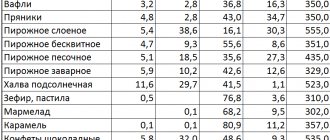It is believed that following a low-fat diet is the most relevant and desirable way to forget everything about excess forever.
Many people believe that this type of nutrition is similar to a low-calorie diet. We can agree with this.
However, there are differences between the designated diets. Low-fat diets are based on partially ignoring fat intake.
The daily food intake should contain no more than 50 grams of fat.

Differences in types of low-fat diets
There are two types of diets called low-fat.

The first belongs to the “well-fed” type, where there are no strict restrictions on the amount of food consumed and the calorie content of incoming products.
Weight loss occurs at a slow pace, but the weight loss process proceeds correctly and without interruption.

Over a period of one month, a person can lose up to 5 kilograms.
The second type of diet is more stringent. It consists of strictly limiting fat in food and strictly monitoring the number of calories.

In this case, the weight comes off faster, but no one can guarantee that the resulting effect will be stable over the subsequent period after completing the diet.
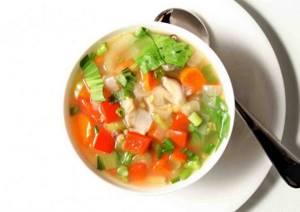
What is the effectiveness of fractional nutrition based on?
To understand how this diet works, you need to understand the effect it has on the body.

Mode
Regime is a very important factor, without which fractional nutrition may be ineffective. When a person strictly adheres to the regime and eats at the same time every day, his body gets the opportunity to adapt to this regime. By the time of eating, salivation increases, gastric juice is produced, and appetite appears. Thanks to this, food is easily digested. In addition, there is no acute feeling of hunger, so there is no need to snack on unhealthy food on the go.
Frequency
There are about 4 hours between meals. During this time, a person does not have time to get too hungry, even if the previous meal was light and low-calorie. In addition, if you feel hungry, the thought of eating soon will make it easier to bear.
Pros and cons of low-fat diets
First, about the important points that will appeal to those with a sweet tooth. They are allowed to eat their favorite treats.
Marshmallow, marmalade. Even flour: cakes, pies. That is, it cannot be said that this is a diet without fatty and floury foods.

The main condition for such a feast is that the share of fats should be about 20% of the daily calorie intake and no more.
In other words, the amount of daily pleasure should be limited to 30-40 grams per day.

By accustoming yourself to this regime, you can lose up to 7 kg in six months. Every day, the calorie content in the body will automatically decrease.
“Fat” calories, which is especially pleasing, will leave those places where they are accustomed to accumulate and thereby spoil the figure. That is, this is the stomach, sides, hips.

Slow-carbohydrate diet: what is it?
The slow-carbohydrate diet does not have this disadvantage. You can break out on it, but what you will eat is familiar and tasty. Your food will contain proteins (a lot), fats, and carbohydrates (a lot), so the problem of lack of energy (and the associated desire to eat sweets and starchy foods) will not worry you. And you will lose weight.
Tim Ferriss
Of course, if you are a sweet tooth addict who can sell your mom and dad for a cake, then a slow-carbohydrate diet will not help you (and only medical intervention will help). But if you have at least some incentive to lose weight, and you are willing to limit yourself in your choice of foods on 6 out of 7 days a week in exchange for the opportunity to eat as much as you want, then be sure to try it.
The creator of the slow-carb diet is Tim Ferriss (here is his website), a businessman, writer, adventurer and health geek. I already wrote about his book “The Ideal Body in 4 Hours”; in fact, it describes a slow-carbohydrate diet.
And, yes, I know that in Russian it should be written “slow-carbohydrate,” but in Tim’s original it is called “slow-carb,” so let it be slow-carbohydrate.
Comparing the benefits of a low-fat diet with a low-calorie variety
The pros and cons of a low-fat diet are often compared to a low-calorie diet.
Among the latter, among the positive aspects, one can only name a quick weight loss effect. Of course, with additional points. Such as maintaining drinking balance.
A low-calorie diet is calculated for a week. Few people can withstand it for a longer period.

Consistently following a low-calorie diet is harmful. There is a restriction for categories of people who are not recommended to resort to strict restriction of calorie foods or complete abstinence from them.
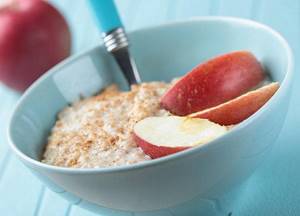
First of all, this is not recommended for use by people who have an unstable psyche.
The diet is also harmful for those who have to actively engage in fitness, especially under heavy loads.

Another category is people engaged in heavy physical labor.
A special group of people for whom a strict diet is contraindicated includes pregnant and lactating women, as well as adolescents at the time of puberty.

A low-calorie diet for these categories is not just harmful, it is dangerous.
There is a decrease in quality of life and performance. Well-being worsens, and an unbalanced state may appear.
Basic principles of fractional nutrition
There are several simple rules by adhering to which you can organize proper fractional meals.
- You need to eat 5-6 times a day. Between breakfast and lunch it is necessary to have lunch, and between lunch and dinner - an afternoon snack. With six meals a day, after the main dinner, shortly before bedtime, make a second light dinner.
- You should create a balanced menu, which will take into account all the useful elements in proper proportions. It is better to do this with a professional nutritionist.
- Harmful foods should be avoided if possible. Prepare dishes mainly by boiling or stewing. Reduce salt and sugar intake to a minimum.
- You need to have one meal schedule for every day and strictly adhere to it.
- Portions should be small - up to 300 grams.
The benefits of a low-fat diet
Now we should talk specifically about the benefits of following a low-fat diet. What are they?
A low-fat diet is easier to follow. No one demands or forces a person to completely give up his favorite foods.

We are not talking about a diet without fried and fatty foods, that is, a complete exclusion of such foods from the diet.
In this case, everything is much simpler. It is enough to follow a certain norm of consumption of super-fatty foods. This applies to butter, pork meat, sausages, sausages.

Sweets have already been mentioned above, but it can be recalled that treats such as shortbread cookies, chocolate, and nuts are allowed. In the amount of 30-40 grams per day.
A person can arrange a sweet bonus during their lunch break or for breakfast with a cup of coffee or tea.

There is no feeling of hunger. A person eats in moderation, receives a certain amount of proteins and carbohydrates, which are responsible for his state of satiety. The body takes in exactly as much food as it needs.

The diet is suitable for a teenage body. Pregnant women and nursing mothers can also follow it.
It is difficult for pregnant women to limit themselves in nutrition, as well as for breastfeeding women. Comfortable weight loss is very important for them.

Such a weight loss system helps reduce the level of “bad” cholesterol in the blood. Blood pressure normalizes.
A person develops good habits. He begins to monitor the amount of fat, protein and carbohydrates consumed. There is a subconscious habituation to following the principles of proper nutrition.

There are different types of fats. Which one should you prefer?
As you know, fats come in animal and plant origin, and they are divided into saturated, monounsaturated and polyunsaturated.
- Saturated fats. It is these fats that you should be wary of, since they are the main sources of cholesterol and are dangerous to health. Contained in meat, primarily pork, as well as eggs, caviar, butter and margarine. It is advisable to completely exclude these products.
- Monounsaturated fats, or Omega-9. They help lower cholesterol levels and are essential for the body in small quantities. Contained in olive oil and nuts such as macadamia, hazelnuts, pistachios, almonds and pecans.
- Polyunsaturated fats, better known as Omega-6 and Omega-3. They contain essential fatty acids - linoleic and linolenic, and they must certainly be present in the food consumed. The main sources are soybean, flaxseed, corn, sunflower, rapeseed oils, walnuts, poppy seeds, sesame, flax, sunflower and pumpkin, fish and seafood, leafy vegetables.
The diet should be designed so that when limiting fatty foods, a deficiency of polyunsaturated fatty acids that is dangerous to health does not occur. At the same time, you should limit yourself to a ratio of 10-12 grams of fat per 100 grams of food.
Comparing the downsides between low-calorie and low-fat diets
Any diet has its downsides.
The disadvantages of a low-calorie diet, when compared with a low-fat diet, are that after almost a year or even much earlier, most people who have adopted such a diet as their main weight loss program begin to see their previous weight return. And what’s most frightening is that he returns with an “increase.”

In addition, a low-calorie diet requires cutting your diet to a minimum.
However, having lost a few kilograms, the further process of losing weight will receive a kind of blockage.

The weight will stop coming off and no amount of repeated low-calorie diet regimens will make it decrease.
What is accompanied by such a situation is known to everyone who has encountered it. Hunger gives rise to irritation, stress, and a feeling of discomfort.

Experts easily explain why this happens. This can be summarized based on factors such as:
- lack of calories, which slows down metabolism;
- low intake of vitamins and minerals into the body.
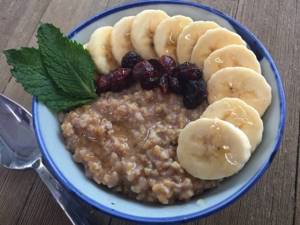
As a result, following a low-calorie diet can undermine your health. You need to use this diet for a short time, until a certain moment when the body is freed from an acceptable amount of kilograms.
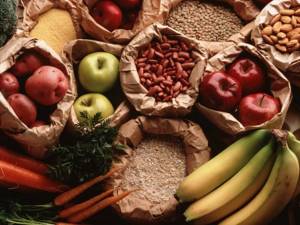
Then you just need to follow a healthy diet, exercise, and occasionally resort to a low-calorie diet menu when your figure requires it.
In low-fat diets, unlike low-calorie diets, the disadvantages do not lead to such tragic consequences.
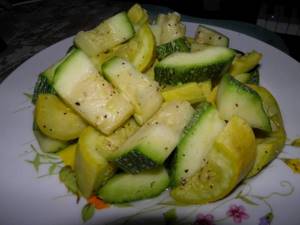
But for their part, they also cause certain inconvenience to a person.
Fractional meals for weight loss
Fractional nutrition is one of the principles of proper eating behavior, which is recommended by nutritionists, and which we often ignore until we are faced with problems of the digestive system or the need to fight excess weight. Let's look at the principles of fractional nutrition and how to properly switch to fractional nutrition. In addition, you will find recipes for dishes, and we will also find out the opinion of a specialist.

Fractional nutrition is a diet in which a person eats often (every 3-4 hours), but in small portions. Proponents of fractional meals argue that if a person eats according to the classical scheme (three times a day), then in the intervals between meals, hormones that awaken appetite have time to be produced. As a result, when a person sits down at the table, he experiences a heightened feeling of hunger, and in this state he eats much more than he needs to be full.
Let's take a closer look at the basics of a fractional diet and find out which foods are most suitable for it. It is worth noting right away that this article is for informational purposes only. Everything stated in it is not a guide to action, but only a description and food for thought. Whether to use the described nutritional system in practice, everyone must decide for themselves, after consulting a doctor.
Negative aspects of a low-fat diet
When following a low-fat diet, weight loss occurs more slowly than when following a low-calorie diet.
For those who want quick results, such slowness causes some irritation.
The use of a low-fat diet by middle-aged people who have a sedentary lifestyle will not lead to the desired result. For this category of people, such nutrition is not effective.
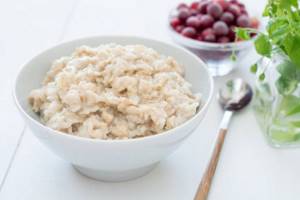
Products: permitted and prohibited
To switch to fractional meals, which will help improve your health and lose weight, you must first eliminate harmful foods from your diet. These include sausages, smoked products, baked goods, as well as anything that contains large quantities of preservatives, flavor enhancers, flavorings, and other harmful additives. You need to give up alcohol and carbonated drinks.
Before you start creating a menu, you need to consult with a specialist and find out what number of calories will be optimal for you, and taking this data into account, calculate your meals for each day.
Particular attention should be paid to the ratio of proteins, fats, carbohydrates. There is a simple general formula by which you can calculate the proportions of the necessary substances. It involves the introduction of 1-1.5 grams of protein per kilogram of a person’s weight. Fats should make up up to 20% of your total daily calories. 60% of daily calories are allocated to carbohydrates, 10 of which can be allocated for the consumption of simple carbohydrates, such as sugar, chocolate, honey.
The following products are included in the menu for fractional meals:
- fresh, boiled and stewed vegetables;
- fresh fruits;
- dried fruits;
- veal;
- turkey;
- beef;
- rabbit;
- bird;
- bitter chocolate;
- marshmallows;
- marmalade;
- honey;
- seafood;
- fish;
- low-fat fermented milk products;
- green tea;
- porridge;
- whole wheat bread;
- bread;
- fresh juices.
Products with no restrictions
Scientists have proven that consuming a significant amount of fat in food does not make a person full. Despite the fact that the calorie content is significantly exceeded.
A diet without fat, which only means avoiding foods high in fat, will always have a positive effect.

If it is impossible to completely give up such food, then choosing a low-fat diet will be the most appropriate, since it will be well accepted by the body, will not cause stress, as when switching to strict diets, and will not cause harm to health.
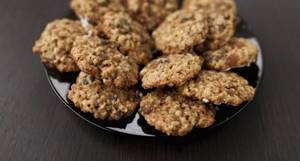
The good news is that with a low-fat nutrition program, many foods can be consumed without restrictions.
This includes dishes made from beans, lentils, and soy. There is a low level of fat, carbohydrates and a high percentage of protein.

In addition to the above products, you can prepare dishes from rice, oats, and buckwheat.

It is allowed to eat potatoes, prepare food that contains cabbage, sweet peppers, tomatoes, and so on.
Fruits and berries are certainly not prohibited either.

You can enjoy sweet apples, oranges, fragrant peaches, and melons. At the end of summer, beginning of autumn there are watermelons.
During certain summer seasons, eat wild and homemade strawberries, raspberries, and other berries, such as cherries and blueberries.
Malnutrition. How to survive on it??
I love malnutrition - I lose weight on it just brutally

